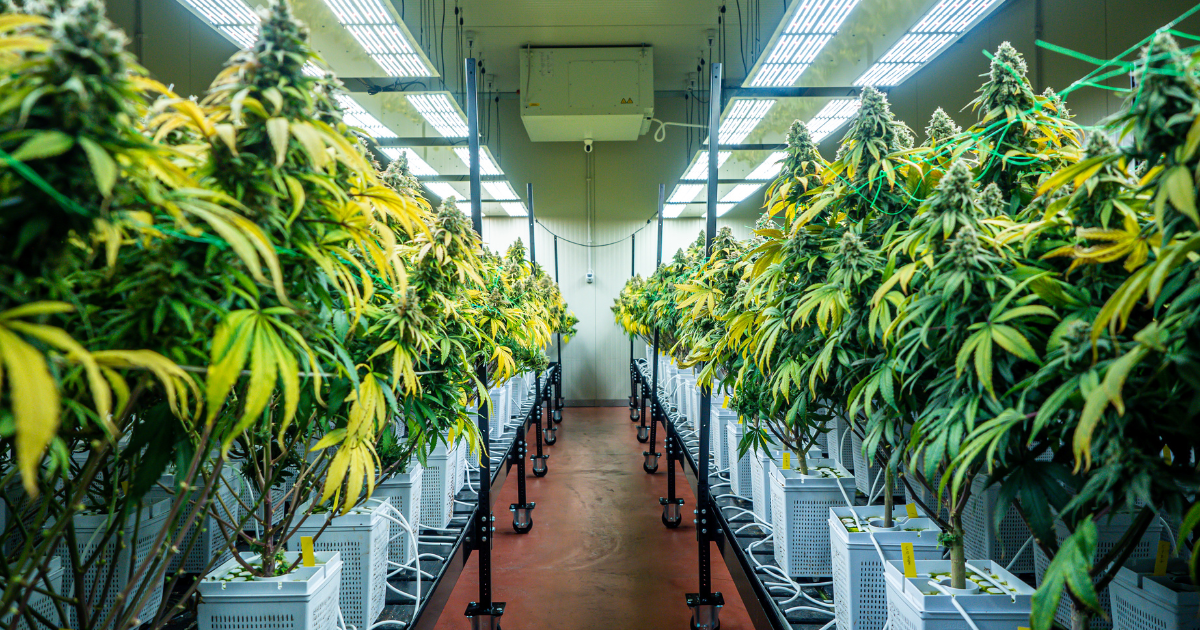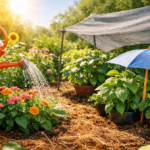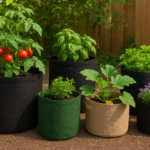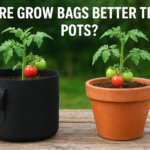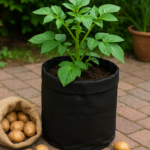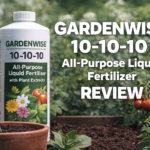Embarking on the journey of indoor weed cultivation opens a world of possibilities for enthusiasts seeking a more controlled and discreet approach to growing cannabis. The rising popularity of cultivating cannabis indoors is fueled by the desire for personalized, high-quality yields. In this comprehensive guide, we’ll delve into the intricacies of setting up your indoor grow space, choosing the right strains, and navigating each stage of the cultivation process.
Whether you’re a novice grower or a seasoned enthusiast, this guide will provide valuable insights, ensuring a successful and rewarding experience in your homegrown cannabis venture.
What is Indoor Weed?

Indoor weed refers to the cultivation of cannabis plants within a controlled indoor environment, typically away from the natural elements. This method allows cultivators to regulate key factors like light, temperature, and humidity, providing optimal conditions for plant growth. By harnessing technology and specialized equipment such as grow lights and ventilation systems, indoor weed cultivation offers greater control over the entire growing process. This approach is favored for its ability to produce high-quality cannabis, customization of environmental factors, and privacy. Indoor weed cultivation has become increasingly popular among enthusiasts seeking a hands-on and discreet means of growing their cannabis.
Importance of Quality Seeds
- Genetic Potential: Quality seeds ensure the presence of desirable genetic traits, setting the stage for a successful cultivation journey.
- Vigorous Germination: Choosing high-quality seeds increases the likelihood of successful germination, providing a strong foundation for healthy plant development.
- Robust Seedlings: Quality seeds contribute to the growth of robust seedlings, characterized by sturdy stems and well-developed root systems, essential for nutrient absorption.
- Consistent Traits: Reputable seeds offer consistency in growth patterns, cannabinoid content, and terpene profiles, allowing for predictable cultivation outcomes.
- Higher Resilience: Quality seeds often exhibit greater resilience to pests, diseases, and environmental fluctuations, reducing the risk of setbacks during cultivation.
- Enhanced Yield Potential: Investing in quality genetics translates to healthier, more vigorous plants, ultimately leading to the potential for higher yields during the flowering stage.
Growing popularity and reasons for choosing indoor cultivation

The surge in popularity of indoor cultivation stems from a multitude of compelling reasons that resonate with cannabis enthusiasts. Privacy stands as a paramount factor, as indoor cultivation allows individuals to discreetly grow their cannabis away from prying eyes. Additionally, the ability to control and manipulate environmental factors like light cycles, temperature, and humidity contributes to consistent, high-quality yields. Indoor cultivation also mitigates external risks such as pests and adverse weather conditions, ensuring a more predictable and successful harvest. This method empowers growers to experiment with various strains and advanced techniques, fostering a sense of mastery and satisfaction in the art of cultivating cannabis.
The Most Basic Indoor Grow Setup

For beginners venturing into indoor cannabis cultivation, a simple and effective setup can pave the way for successful harvests. Here’s a basic guide to the most fundamental indoor grow setup:
- Growing Space:
- Select a dedicated and discreet space, like a closet or a small room, to accommodate your plants.
- Containers and Growing Medium:
- Choose appropriate containers with drainage holes for each plant.
- Opt for high-quality soil or a soilless growing medium for optimal nutrient absorption.
- Light Source:
- Start with basic fluorescent or LED grow lights for the vegetative stage.
- Place lights at an adjustable height to accommodate plant growth.
- Ventilation:
- Ensure basic airflow with a fan to prevent stagnant air and control temperature.
- Use exhaust fans or open windows to maintain fresh air circulation.
- Seeds or Clones:
- Acquire quality cannabis seeds or clones from reputable sources to kickstart your cultivation.
- Nutrients:
- Begin with a balanced, all-purpose fertilizer suitable for the vegetative stage.
- pH Testing Kit:
- Invest in a pH testing kit to monitor and adjust the pH levels of your watering solution.
- Watering System:
- Use a watering can or a basic irrigation system to ensure consistent moisture levels.
- Temperature and Humidity Monitoring:
- Employ a basic thermometer and humidity gauge to monitor environmental conditions.
- Basic Timers:
- Set up timers for your grow lights to maintain consistent light cycles during the vegetative stage.
Setting Up Your Indoor Grow Space
Embarking on the journey of cultivating cannabis indoors requires careful consideration and strategic planning. The initial step in this exciting endeavor involves selecting the perfect location for your indoor grow space.
Choosing the Right Location
When choosing a location for your indoor cannabis cultivation, prioritize accessibility and discretion. Opt for a dedicated room or a discreet tent that provides ample space for your plants to thrive. Ensure the chosen space allows easy access for monitoring and maintenance while maintaining the privacy necessary for discreet cultivation.
Essential Equipment and Tools
Equipping yourself with the right tools and equipment is crucial for a successful indoor grow. Invest in quality grow lights, ventilation systems, and containers suitable for your chosen cultivation method. High-quality soil or growing medium, nutrient solutions, and pH testing kits are essential components of your toolkit. Depending on your preferences, consider advanced tools like hygrometers and thermometers to monitor and control environmental conditions accurately.
- Weed seeds
- Grow room or tent
- Carbon filter
- Grow lights
- Ventilation
- Pots or containers
- Growing medium
- Nutrients
- Thermometer
- PH meter
Creating an Optimal Environment for Growth
Creating an optimal environment is a key factor in the success of your indoor cultivation. Regulate temperature and humidity levels to mimic the ideal conditions for cannabis growth. Ensure proper ventilation to prevent issues like mold and mildew. Customize light cycles to simulate natural sunlight, providing your plants with the energy they need for robust development. Implementing a reliable timer for your grow lights will help maintain consistency in the light-dark cycles, promoting healthy vegetative and flowering stages.
Strategic placement of fans can enhance airflow, preventing stagnant air pockets that may lead to pest and disease issues. Consider using reflective materials on walls to maximize light absorption by your plants. Overall, attention to these details during the setup phase sets the stage for a flourishing indoor cannabis garden.
Selecting the Right Strain
The world of cannabis offers a vast array of strains, each with its unique characteristics and effects. Navigating through these options is a crucial step in the journey of cultivating cannabis indoors.
Understanding Different Strains
Cannabis strains can be broadly categorized into three types: indica, sativa, and hybrids. Indica strains typically induce relaxation, while sativa strains offer energizing effects. Hybrids combine characteristics of both. Understanding these distinctions is fundamental to choosing a strain that aligns with your desired effects and cultivation goals.
Factors to Consider When Choosing a Strain
Several factors come into play when selecting the right strain for your indoor cultivation project. Consider the available space in your grow area – some strains naturally grow tall, while others stay more compact. Think about the time commitment, as flowering periods can vary. Novice growers may lean towards resilient and easy-to-manage strains, while experienced cultivators might explore more challenging varieties.
The cannabinoid and terpene profiles of a strain also influence its effects and flavors. CBD-rich strains offer medicinal benefits, while high-THC strains deliver potent psychoactive effects. Terpenes contribute to the aroma and therapeutic properties, adding another layer to the strain selection process.
Popular Strains for Indoor Cultivation
Certain strains have earned a reputation for their suitability in indoor environments. Northern Lights, a classic indica, remains a favorite for its manageable size and impressive yields. Blue Dream, a well-balanced hybrid, adapts well to controlled environments. White Widow is renowned for its resilience and potency, making it an excellent choice for indoor growers.
OG Kush is another popular strain, known for its pungent aroma and relaxing effects. Girl Scout Cookies (GSC), a hybrid, offers a unique blend of euphoria and relaxation. These strains have proven track records in indoor cultivation, showcasing adaptability to various growing techniques and environmental conditions.
Germination and Seedling Stage
Embarking on the journey of indoor cannabis cultivation begins with the crucial phases of germination and the seedling stage. Mastering these early steps sets the foundation for a successful and robust cannabis garden.

Proper Germination Techniques
The first step in your cannabis cultivation adventure is germination, the process by which a seed transforms into a viable seedling. Begin by placing your seeds in a damp paper towel within a sealed plastic bag. Keep the environment warm and dark, encouraging the seeds to sprout. Once the taproot emerges, carefully transplant the seeds into your chosen growing medium.
Maintaining proper moisture levels throughout germination is vital. Avoid over-saturation, which can lead to mold, and ensure a consistent, humid environment. Employing a gentle touch and patience during this phase is key to promoting healthy seedling development.
Caring for Seedlings
Once your cannabis seeds have successfully germinated, the focus shifts to caring for the delicate seedlings. Provide a gentle and consistent light source, preferably with a low-intensity fluorescent or LED grow light. Adequate humidity is crucial during this stage, so consider using a humidity dome to create an environment conducive to optimal growth.
Monitor the temperature closely, aiming for a range between 70-75°F (21-24°C). This ensures that your seedlings flourish in an environment mimicking their natural habitat. Be cautious with watering; overwatering can lead to damping off, a common issue in the early stages of growth. A mild nutrient solution may be introduced, but always start with a diluted mixture to avoid overwhelming the young plants.
Transplanting and Vegetative Stage
Transferring Seedlings to a Larger Container
The transplanting phase is a pivotal moment in the indoor cannabis cultivation process. Once your seedlings have outgrown their initial containers, carefully transfer them to larger ones. This promotes healthy root development, preventing overcrowding and ensuring ample space for continued growth. Be gentle during the transplant to avoid stressing the plants, and use high-quality soil or growing medium to provide essential nutrients.
Providing Proper Nutrients During the Vegetative Stage
The vegetative stage is a period of robust growth, where your cannabis plants focus on developing a sturdy structure. Supplying the right nutrients is crucial during this phase. Choose a balanced fertilizer with higher nitrogen levels to support vigorous foliage growth. Regularly monitor soil pH and adjust nutrient levels accordingly. Providing optimal nutrition in the vegetative stage lays the groundwork for a thriving and resilient plant.
Managing Light Cycles for Optimal Growth
Light plays a pivotal role in the vegetative stage. Ensure your plants receive 18 to 24 hours of light daily, simulating long daylight hours. High-intensity grow lights, such as Metal Halide or LED, are ideal for promoting strong vegetative growth. Consistency in light cycles encourages healthy leaf development and sets the stage for a successful transition to the flowering stage.
Flowering Stage
Transitioning to the Flowering Stage
As your plants mature, it’s time to transition to the flowering stage. Adjust the light cycle to 12 hours of light and 12 hours of uninterrupted darkness daily. This signals to the plants that it’s time to shift focus from growth to flower production. This phase typically begins 8 to 10 weeks after germination, varying based on the strain.
Adjusting Light Cycles for Flowering
During the flowering stage, managing light cycles becomes critical. Maintain a consistent 12-hour dark period to ensure proper bud development. Choose high-quality bloom-phase grow lights, such as High-Pressure Sodium (HPS) or specific LED spectrums, to enhance flower production. Consistent darkness is essential for resin production and overall flower quality.
Monitoring and Managing Nutrient Levels
Vigilant monitoring of nutrient levels is paramount during flowering. Adjust fertilizer formulations to support blooming, with higher phosphorus and potassium content. Keep a close eye on soil pH to prevent nutrient lockout, which can impede nutrient absorption. Regularly check for signs of nutrient deficiencies or excesses and adjust accordingly to promote healthy flower development.
Pruning and Training Techniques
Importance of Pruning for Increased Yields
Pruning is a vital aspect of indoor cannabis cultivation, directly impacting yield. By selectively removing unnecessary foliage, growers redirect the plant’s energy towards bud production. This promotes better light penetration and airflow, fostering an environment conducive to larger, more potent yields.
Training Methods to Shape the Plant
Various training techniques allow growers to shape their cannabis plants for optimal growth. Low-stress training (LST) involves gently bending and tying down branches to create a more even canopy, maximizing light exposure to lower buds. High-stress training methods like topping or fimming encourage bushier growth, enhancing bud sites and overall yield potential.
Ensuring Proper Airflow and Light Distribution
Proper airflow and light distribution are paramount for healthy plant development. Pruning and training contribute to an open canopy, reducing the risk of mold and mildew. Well-distributed light ensures that all parts of the plant receive adequate illumination, promoting uniform growth and bud development.
Pest and Disease Management
Common Culprits: Identify prevalent threats such as spider mites, aphids, and powdery mildew to initiate targeted preventive measures.
Regular Inspection: Conduct routine checks to detect early signs of infestations or infections, allowing for swift intervention before issues escalate.
Clean Environment: Maintain a sanitized grow space, minimizing potential habitats for pests and pathogens through regular cleaning and proper waste disposal.
Quarantine Measures: Quarantine new plants to prevent introducing potential threats, minimizing the risk of spreading pests or diseases.
Beneficial Insects: Introduce beneficial insects like ladybugs, which act as natural predators, providing an eco-friendly solution to pest control.
Neem Oil and Organic Sprays: Utilize organic solutions such as neem oil and garlic-based sprays for effective pest control without compromising the quality of the harvest.
Early Treatment: Address pest or disease issues at their onset to prevent widespread infestations, enhancing the overall health of the plants.
Integrated Pest Management (IPM): Implement a holistic approach, combining preventive measures, natural predators, and organic solutions for a comprehensive pest management strategy.
Monitor Nutrient Levels: Ensure proper nutrient levels, as nutrient deficiencies can weaken plants, making them more susceptible to pests and diseases.
Humidity Control: Maintain optimal humidity levels to discourage the development of conditions favorable to pests and diseases, particularly those thriving in damp environments.
Harvesting and Drying
Harvesting and drying are critical stages in the cannabis cultivation process, directly influencing the quality of the final product. Determining the right time to harvest involves close monitoring of trichome development, ensuring peak potency. Using sharp, clean scissors, trim mature buds carefully, removing excess leaves to enhance the overall appearance and potency.
Proper drying is equally vital. Hang trimmed buds in a cool, dark, and well-ventilated space, allowing for a slow drying process. This gradual drying preserves the cannabinoids, terpenes, and overall flavor profile. Consistent environmental conditions during drying, such as maintaining the right humidity, prevent mold growth and ensure a smoother smoke.
Attention to detail in both harvesting and drying contributes to a premium cannabis product, maximizing potency, flavor, and overall satisfaction for the cultivator and consumer alike.
Post-Harvest Care
- Trimming and Manicuring Buds:
- Carefully trim excess leaves using sharp, clean scissors for a polished appearance.
- Manicure buds to remove any remaining unwanted material, enhancing visual appeal.
- Storing Harvested Weed Properly:
- Place trimmed buds in airtight containers to shield them from light and humidity.
- Choose a cool, dark storage space to maintain freshness and potency.
- Tips for Long-Term Preservation:
- Consider vacuum-sealing for airtight storage, minimizing exposure to oxygen.
- Freezing, in properly sealed containers, can extend preservation for long-term storage.
- Avoid Plastic Bags:
- Refrain from using plastic bags as they can compromise the quality of the stored cannabis.
- Monitor for Mold and Mildew:
- Regularly inspect stored buds for any signs of mold or mildew.
- Swiftly address any issues to prevent the spread and ensure the longevity of the harvest.
- Advanced Techniques for Indoor Cultivation
- Hydroponics and Soilless Mediums:
- Experiment with hydroponic systems or soilless mediums for precise nutrient control and potentially increased growth rates.
- Implementing CO2 Enrichment:
- Introduce controlled CO2 supplementation to enhance photosynthesis, promoting faster and more robust plant growth.
- Experimenting with Light Spectrum:
- Adjust the light spectrum during different growth stages using LED lights with customizable spectrums to optimize plant development.
- Environmental Control Systems:
- Utilize technology for climate control systems, maintaining optimal temperature, humidity, and CO2 levels for enhanced cultivation.
- Automation Tools for Monitoring:
- Implement automated systems equipped with sensors to monitor and adjust environmental conditions in real-time, minimizing human error.
- Maintaining pH and Nutrient Precision:
- Precisely control pH levels in the growing medium to optimize nutrient absorption, ensuring healthy plant development.
- Ventilation and Airflow Optimization:
- Invest in advanced ventilation systems to ensure consistent airflow, minimizing the risk of mold and mildew.
- Advanced Genetics and Breeding:
- Explore advanced genetics and breeding techniques to develop strains tailored to specific preferences or growing conditions.
- Integrating Smart Growing Technologies:
- Incorporate smart technologies such as automated irrigation systems and climate control apps for efficient and hands-free cultivation.
- Experimenting with Vertical Farming:
- Optimize space utilization by exploring vertical farming techniques, maximizing yields in limited indoor environments.
Environmental Control Systems
Efficient environmental control is paramount in indoor cannabis cultivation, where precise conditions directly impact plant health and yield. Employing advanced environmental control systems ensures growers maintain optimal parameters for temperature, humidity, and CO2 levels throughout the cultivation process.
- Temperature Regulation:
- Utilize climate control systems to maintain a consistent temperature range, typically between 70-85°F (21-29°C), promoting ideal growth conditions.
- Humidity Management:
- Implement humidity control measures to prevent excess moisture, reducing the risk of mold and mildew. Aim for 40-60% humidity during the vegetative stage and 40-50% during flowering.
- CO2 Enrichment:
- Integrate CO2 enrichment systems to elevate carbon dioxide levels, enhancing photosynthesis and potentially increasing growth rates and yields.
- Ventilation Systems:
- Invest in quality ventilation systems to ensure proper airflow, preventing stagnant air pockets and maintaining a fresh supply of CO2.
- Automated Monitoring:
- Employ automated monitoring tools equipped with sensors to track temperature, humidity, and CO2 levels in real-time, allowing for immediate adjustments.
- Climate Control Apps:
- Integrate climate control apps for remote monitoring and adjustments, providing convenience and flexibility for growers.
- Dehumidification and Humidification:
- Use dehumidifiers and humidifiers as needed to fine-tune humidity levels, especially during flowering when maintaining lower humidity is crucial.
- Lighting Control:
- Incorporate lighting control systems to manage the duration and intensity of artificial light, mimicking natural sunlight for optimal plant development.
- Data Logging:
- Implement data logging features in environmental control systems to track historical data, enabling growers to analyze trends and make informed adjustments.
- Emergency Protocols:
- Establish emergency protocols in case of system failures, ensuring quick responses to maintain a stable environment for plant health.
Conclusion
In conclusion, successful indoor cannabis cultivation requires a meticulous approach, from the initial stages of seed selection to advanced techniques and post-harvest care. By emphasizing factors such as genetics, proper training, and environmental control, growers can achieve optimal yields and potent harvests. Diligent attention to detail, proactive pest management, and a commitment to refining cultivation practices contribute to a rewarding journey for cannabis enthusiasts cultivating their own premium-quality stash.
FAQs
Can I grow weed indoors legally?
Check your local laws and regulations as they vary widely. In some places, it may be legal with restrictions, while in others, it might be entirely prohibited.
What is the best strain for beginners?
Beginner-friendly strains include Northern Lights, Blue Dream, and White Widow due to their resilience and ease of cultivation.
How do I prevent pests in my indoor grow space?
Maintain a clean environment, use preventive measures like neem oil, and consider introducing beneficial insects to control pests naturally.
Is hydroponics better than soil for indoor cultivation?
Both methods have their advantages. Hydroponics may offer faster growth, but soil can be more forgiving for beginners.
How long does it take to grow weed indoors from start to finish?
The timeline varies depending on the strain, but on average, it takes around 3 to 5 months from germination to harvest.

